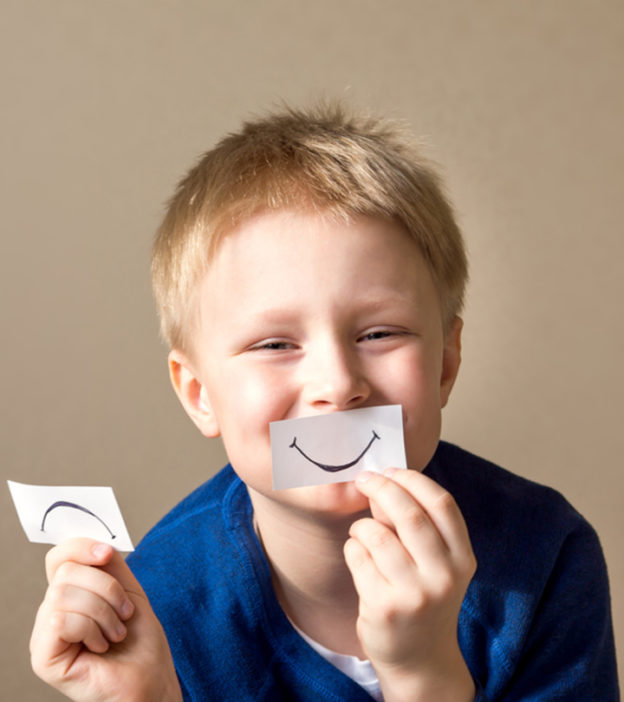
As a parent, you may have contemplated the origin of the subtle differences between your child and their siblings or peers. These unique traits emerge from child temperament and are likely to form the building blocks of their personality as they shape the child’s regulation and reactivity. While disposition in children can be classified into types, not all children fall under these categories. In addition, each type has a different effect requiring different management methods and parental adaptation. This post covers various aspects of child temperament, from what causes it to why it’s important and how to deal with a challenging temperament; read on to learn more.
What Is Child Temperament?
Child temperament refers to the unique ways in which a child adapts and reacts to their existing social environment and novel experiences. Your child’s temperament can be determined by the extent to which they are reactive, sociable, and self-regulated. These characteristics are expressed not just in their emotionality but also in their behavior.
These characteristics develop during their initial years of life and stabilize over time. Studies suggest that parental behaviors, familial or cultural values, social environments, and changes in parenting styles influence the development of socially appropriate behaviors in children (1). Thus, minor changes in child temperament can be controlled by experiences and parental influence in these formative years, but once set, their fundamental temperament does not change.
Why Is Temperament Important In Child Development?
Your child’s temperament influences how they react behaviorally and emotionally to social situations, people, and life experiences.
- Influences reactivity: A highly reactive child may be very agitated or excited in the face of various conditions, compared to a child with low reactivity who is laid back in their approach.
- Affects sociability: While an introverted child may have low sociability, a highly sociable child may be very outgoing and mingle with crowds easily.
- Shapes self-regulation: Highly self-regulated children may be capable of maintaining decorum and attentiveness through activities, but a child with poor self-regulation may easily give up.
- Determines their emotional temperament: Studies show that a child’s active or shy temperament influences emotional difficulties, conduct problems, hyperactivity, and inattention in later years (2).
- Defines adaptability: Your child’s temperament defines how they adapt and interact at school or home, among peers and relatives, and in every other aspect of life. It assists in understanding the nuances of social relationships, enabling socio-emotional regulation, and adapting to others’ temperaments.
- Directs the goodness of fit: Temperament allows the parents and teachers to determine a goodness of fit and modify their management methods according to the child’s needs without feeling overwhelmed (4).
- Enables parental adaptation: A clear understanding of the various child temperaments and their origins will enable you to understand your temperament better and prevent unnecessary stress. In addition, this will help you bridge your allied differences through clear communication and well-established boundaries.
Quick fact
What Factors Cause Child Temperament?
Child temperament has been linked to both nature and nurture by several researchers, psychologists, and anecdotal studies. However, the ongoing debate on these factors indicates that none of these causal factors can be singularly responsible for the way a child reacts or adapts to their social environment.
1. Genetics
Child temperament is believed to be genetically determined and present in children from birth. Twin studies indicate that temperament is strongly influenced by genetic factors, where heritability influences the similarities and the differences in temperament by twenty to sixty percent (5). Thus, it indicates that a child’s temperament may be, by default, related to the innate temperament of their parents.
2. Home environment
The environment a child grows up influences their reactivity, motor activity, and self-regulation, despite the genetic factors. Studies indicate that two children within the same house do not have the same temperament due to internal factors that operate within the family such as family structure, home environment, shared activities, soothing methods, and differential treatment (5).
3. Brain and temperament
Studies indicate that changes in certain areas of the brain may be responsible for a child’s responses to social situations. Studies indicated an association between asymmetric frontal activation and effect in children, where activity on the left frontal lobe indicated a positive effect while activity on the right indicated a negative effect (6). In addition, brain imaging studies indicate that greater activation and volume of the amygdala influences inhibited temperament in children (7) (8).
4. Parenting styles
Studies show that the way a child is parented influences their temperament. For example, a child who has had authoritarian (harsh or strict) parenting may display traits of social withdrawal and introversion, while authoritative parenting allows the child to be more socially responsive (9). An improper parenting fit may influence a change in the child’s temperamental traits.
In addition, anecdotal studies suggest that some other factors, such as culture, vulnerability to psychosocial adversities, harsh disciplining methods, past experiences, and parental attachment, are likely to influence a child’s temperament. In addition, studies indicate that maternal depression and sensitivity play a significant role in difficult child temperament (10).
What Are The Types Of Child Temperament?
Modern classifications typify child temperament into easy or flexible, difficult or challenging, and slow to warm up or shy (4) (11).
1. Easy temperament
The most commonly seen temperament is where children are relatively even-tempered and stable in their sleep, hunger, and emotionality. They prefer to establish and function around a routine; however, when needed, they also flexibly adapt to changes with a relatively positive effect. They are organized and cooperative when given tasks and tend to function well even in group settings and noisy surroundings.
2. Difficult temperament
Children with difficult temperaments are the opposite of flexibility. They cannot function around a structured routine and prefer to be spontaneous in their activities. They may be extremely fussy, irritable, withdrawn, and exhibit a negative outlook in social settings. They are likely to exhibit intense aversiveness or anxious reactivity when exposed to novel experiences and get easily distracted by noises and flashing lights. However, they are also highly active, persistent, diligent, spirited, and decisive when dedicated to a task.
3. Slow to warm up temperament
Children who are slow to warm are often known as having a shy temperament due to their high sensitivity. These children tend to show dislike towards people and crowds and may react negatively when forced to interact. In addition, they are slow to express emotions or engage in activities that are of low intensity. They fear new experiences, yet when exposed at length, may gradually warm up to the unexplored surroundings. Initial inhibitions towards new experiences and social scenarios tend to fade away with repeated exposure.
Despite these subtypes, parents may find their children not particularly fitting into any category due to mixed temperaments. This is relatively common across children and does not indicate any abnormality in the child.
Quick fact
What Are The Traits Of Child Temperament?
Temperament traits are the underlying characteristics upon which the child’s personal qualities are established. These unique attributes determine how the child reacts and adapts to their environments and the various temperaments around them. A child’s temperament is defined by a set of nine traits.
1. Biological rhythms
A child with a stable biological rhythm is regular in routine activities of eating, sleeping, and toileting. A child with an irregular rhythm may experience challenges with regular routines and experience hunger, thirst, and tiredness at random intervals (13).
2. Activity level
Activity level is the child’s energy level to perform activities and the type of activities that they prefer. Highly active children prefer activities that keep them physically and mentally engaged, while children with low activity levels prefer intellectual activities that require them to stay in one place for quite a while (14).
3. Approach/withdrawal
A child’s tendency to approach or withdraw from new activities and people is linked to their general extraversion or introversion. A child who is approach-oriented may quickly and actively approach and engage in various situations, people, or tasks at hand without much need for instruction or introduction. However, a child who is withdrawn may hesitate to join activities and shy away from people. They may be slow to adapt and require instruction to explore their surroundings and express themselves (15).
4. Persistence
A highly persistent child may be able to maintain sustained focus on tasks irrespective of its difficulty level and other influential factors such as the number of elements within the task, task sequence, time allowance, and external interruptions. However, a child with poor persistence may easily give up on or postpone doing a task that they find difficult or time-bound (16).
5. Distractibility
Distractibility determines the child’s persistence with a task. A child who is easily distracted may be averted from tasks even by minor environmental distractions and have difficulty continuing a task for long hours. They may also move from one task to another without completing the previous task and show increased forgetfulness. A highly attentive child may not be easily distracted and persist for long periods on any given task ,even when distraction is forced upon them. They also have a keen memory for external details along with the finer task details, helping them complete the task with dedication (17).
6. Sensory threshold
Sensory threshold refers to the sensitivity level of the child and how they react to noise, lighting, touch, and pressure. Highly sensitive children have a low sensory threshold. They are easily bothered by simple nuisances and physical contact. In contrast, children with a high sensory threshold may not be bothered by a noisy environment, physical contact, and injuries and may even prefer to have bright lights around them (18) (19).
7. Intensity of reaction
The way a child reacts to sensory stimuli varies depending on their sensitivity to the stimuli. Intense reactions such as explosive anger or temper tantrums, extreme happiness, inconsolable crying behaviors, and anxiety may be exhibited by children who have a high sensitivity to environmental stimuli, while children with low sensitivity may not express their feelings openly, even during intense situations (19).
8. Mood
From generally cheerful to moody, a child’s mood dictates their general tendency towards positive or negative reactivity. A child who is generally cheerful may have a positive outlook toward life situations and be actively curious about different activities. However, a child who is dull or moody may have a generally negative mindset, with a lot of doubt and fear towards themselves, others, and various life situations (19).
9. Adaptability
Adaptability refers to a child’s openness to different stimuli. Highly adaptable children go from one new experience, person, routine, and environment to another without much fuss. However, children with poor adaptability get easily frustrated, upset, take time to adapt to new situations, and find transitions emotionally and intellectually challenging (20).
What Are The Effects Of Child Temperament?
Child temperament affects the child’s task orientation, personal-social flexibility, and reactivity both at home and school (21) (4).
1. Effects of easy temperament
An easy child may have a positive mindset, be regular in routines, and be slow to react to stressors at home and school environments, in peer groups, and in life situations. They may be socially well-adjusted, outspoken, and dedicated, which is well-appreciated and adored by everyone around them. An authoritative parenting style may help enrich their positive qualities and motivate them toward success in all spheres of life.
2. Effects of slow to warm up temperament
A slow to warm up child may take time and space to observe their surroundings and assess people around them before adjusting to them. They may not be quick to express themselves, are less sensitive, and may or may not stick to schedules. Due to their judicious nature, shy children are susceptible to social and peer pressure, forcing them to either withdraw or have intense reactions to minor problems. However, positive parenting can help coach and guide them toward being more receptive to change.
3. Effects of difficult temperament
A difficult child may be highly active with irregular biological rhythms and high reactivity. They may be highly sensitive to external interruptions and their surroundings which makes it challenging for them to adapt to new stimuli. Spirited children also find it difficult to focus on tasks and are susceptible to distractions, making school environments challenging. At home, parents and immediate caregivers may be critical, authoritarian, and hard on their children due to their inability to manage a difficult child.
How To Deal With A Difficult Temperament In A Child?
Dealing with a difficult child requires parents to use the goodness of fit where the parent positively adapts their methods of caregiving and disciplining to enrich the child’s personal reactivity and experiences towards the world.
1. Stick to healthy routines
Preparing a stable routine for the child and ensuring the regulation of tasks and biological rhythms will enable them to be more organized. Having stable boundaries on when they are expected to eat, sleep, play, and study can enable them to adapt better to transitions.
2. Be a role model
A good parenting fit will enable the child to learn respect, social and communication skills, adaptability, emotional expression, persistence, and self-regulation. Power struggles with authoritarian parents or extremely permissive parenting may make the child more difficult to handle.
3. Use positive parenting
The way you talk to your child who is excessively active, moody, intensely reactive, or hypersensitive plays a major role in deciding how they react to any situation. An encouraging parent may be more successful in helping a child adjust to change and teaching them to verbalize their feelings. In addition, a parent who is aware of how their own reactivity and temperament affect the child may be better able to control their child and guide them towards socially acceptable behaviors.
Research finds
4. Understand your child
Parental knowledge of their child’s temperament allows them to understand their triggers, comfort zones, and reactivity. It enables the parent to modify their disciplining methods, parenting style, and personal temperament to suit the needs of their child while also playing to their own strengths. Avoid using coercion on them as a means to get them to stop when they overdo or cooperate when they refuse.
5. Accept your child
A parent who uses harsh methods to modify their child’s temperament entirely does more harm than good. Accepting your child’s idiosyncrasy, playing to their strengths, and adapting teaching methods to suit their temperament may help them learn more self-control over their psycho-motor reactivity and emotional expression.
6. Avoid comparisons
Comparing them with another may be perceived as criticism and parental dislike by your child, making them less self-confident and more reactive or stubborn. They may refuse to listen and behave in ways opposite to the cited example or misbehave as a way to express rebellion.
1. How is child temperament measured?
Child temperament has been measured by researchers using tools such as the Infant Behavior Questionnaire and Integrative Child Temperament Inventory (22) (23).
2. Is ADHD a temperament?
Child temperament affects how a child perceives, understands, and reacts in social settings. It is a vital component of the child’s future persona and thus affects how others perceive and respond towards them, further influencing their character. While anecdotally, the three temperaments are affected by genetics, parenting styles, and other factors, research suggests that brain plasticity plays a vital role. In addition, while dealing with a problematic child requires patience and personal understanding, parents must also ensure that their child is seen positively by teachers and other caregivers to reduce the stress placed on the child.
Key Pointers
- Child temperament underlies the child’s reactivity and self-regulation, forming the foundation of their future persona.
- The three temperamental types are influenced by a combination of nine traits, including activity, sensitivity, persistence, approach, distraction, mood, regularity, intensity, and adaptability.
- Temperament is affected by genetics, parenting styles, brain plasticity, and other factors.
- Handling difficult temperament requires using the goodness of fit while parenting the child.


































